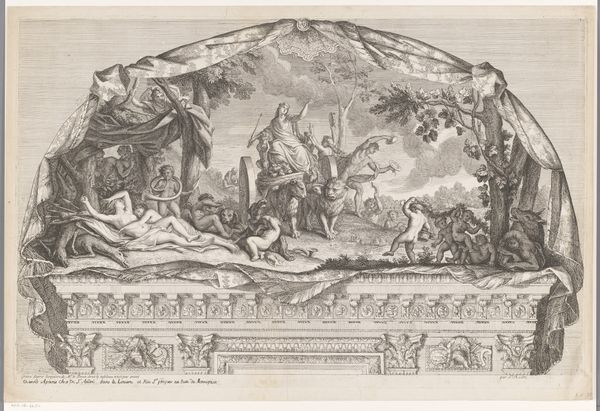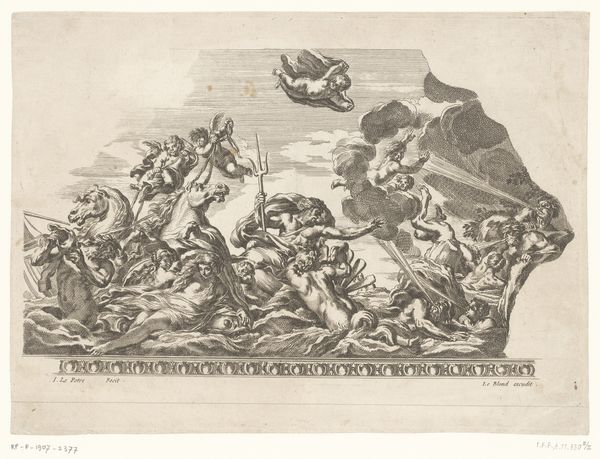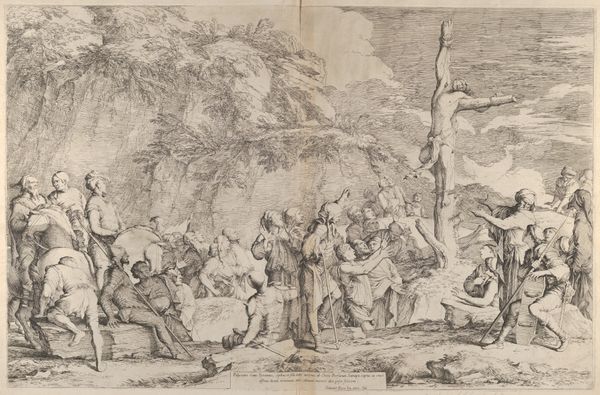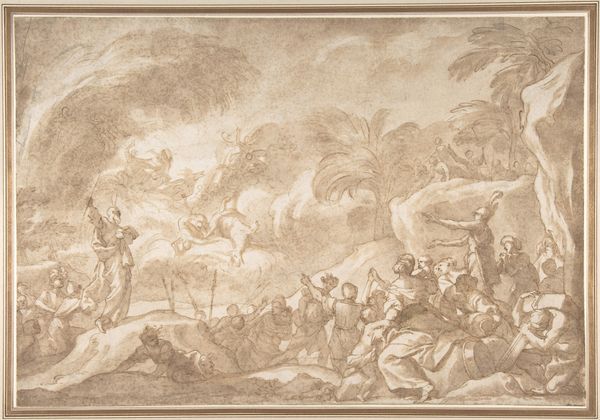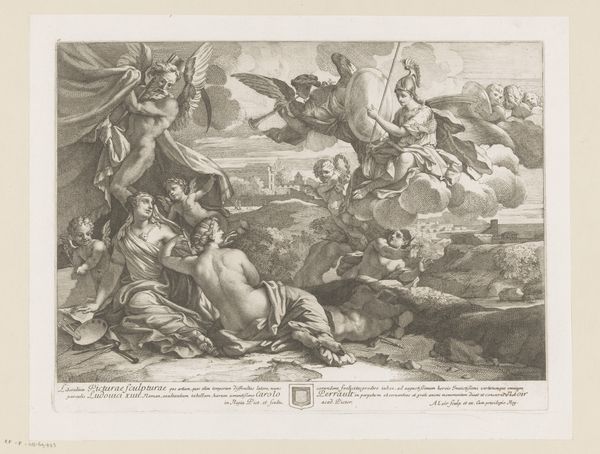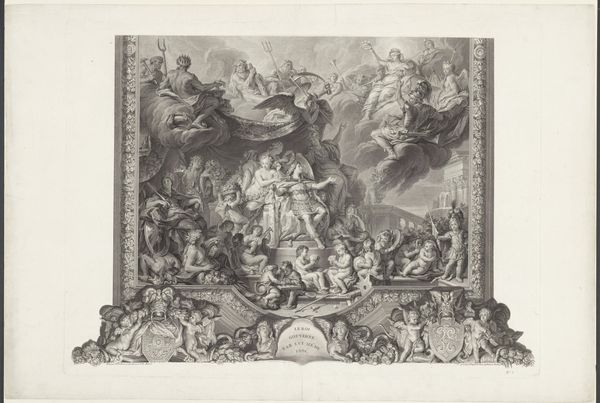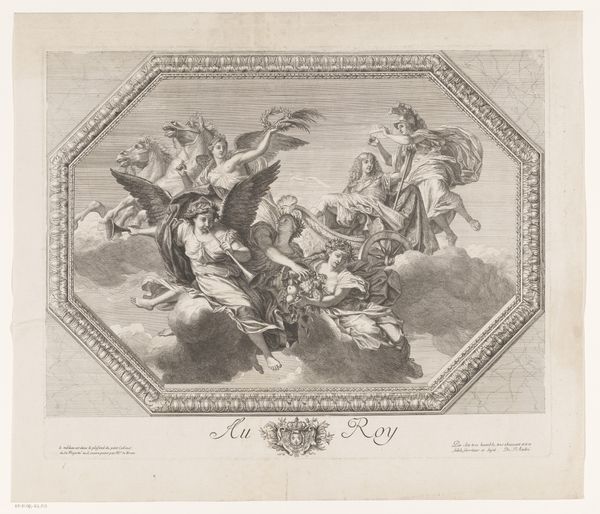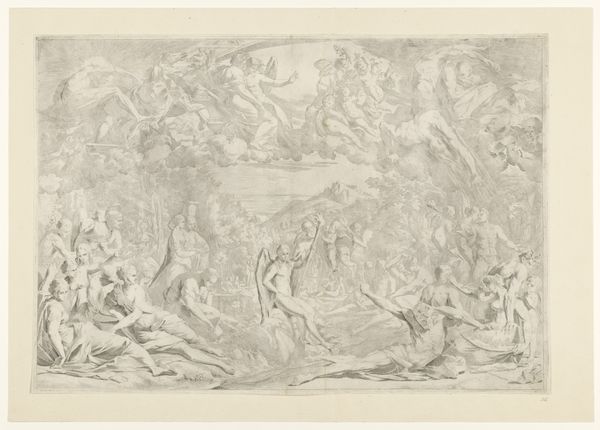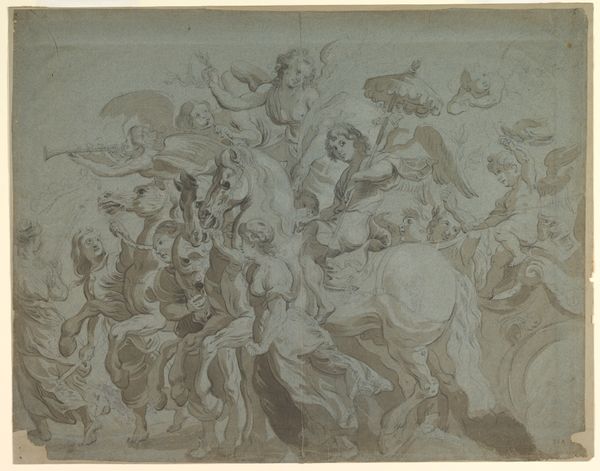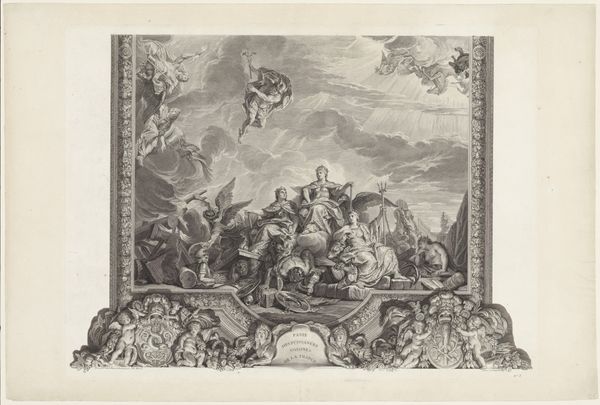
Personificatie van Frankrijk omringd door Griekse en Romeinse goden c. 1720
0:00
0:00
drawing, ink
#
drawing
#
allegory
#
baroque
#
figuration
#
ink
#
line
#
history-painting
#
academic-art
Dimensions: height 405 mm, width 753 mm
Copyright: Rijks Museum: Open Domain
Curator: This is a drawing titled "Personification of France Surrounded by Greek and Roman Gods" by Nicolas Charles de Silvestre, created around 1720 using ink. Editor: It strikes me immediately as…overwhelming. A torrent of figures in a confined space. What a whirlwind of details! Curator: Yes, a carefully orchestrated whirlwind, wouldn’t you say? The density reflects the Baroque aesthetic, emphasizing dynamism and emotional intensity. It's crucial to remember that France, particularly under Louis XIV, sought to legitimize its power by drawing direct parallels with the grandeur of classical civilizations. This work, steeped in allegory, speaks volumes about that pursuit. Editor: Absolutely, France is meant to be perceived as an inheritor of this historical grandeur. The artist employs strategies for establishing a kind of compositional logic here though. Note how the clusters of figures interact and direct your sightline from the lower register upwards and inwards. It's interesting how it contains all that movement within an ordered system of balance. Curator: The drawing offers a perspective into the historical context. It's likely a preliminary study for a larger ceiling painting planned for a prominent location, perhaps intended to reinforce a specific political message of the time – a message about France's centrality, its divinely ordained place amongst nations. Editor: Agreed, and technically, it's also a skillful use of line. See how each stroke defines form and volume, creating an interplay of light and shadow that brings these mythological figures to life, all without the use of color. It’s incredibly self-referential, too. Classicism and order evoked with a line imitating engravings, to give the scene the aura of permanence. Curator: I see it as a statement on power and national identity, reflecting a conscious effort to construct a narrative of cultural and political ascendancy. It's vital to remember the violence and colonial ambition behind the seemingly benign allegories. It encapsulates the construction of French identity during that era. Editor: I appreciate how the controlled chaos embodies that ambition while also suggesting how fragile this sense of order can truly be, resting upon these almost dizzyingly unstable foundations of historical allegory. Curator: A reminder, indeed, that what appears divinely inspired is often carefully, strategically constructed. Editor: Precisely, and as a drawing, we can see both its intended effect and how, visually, it manages to establish a convincing system that achieves that intended effect.
Comments
No comments
Be the first to comment and join the conversation on the ultimate creative platform.

